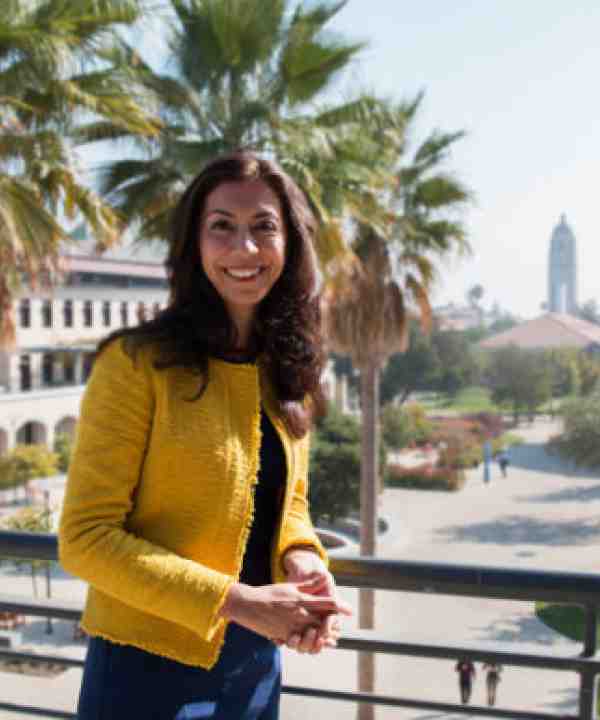December 03, 2017 | Stanford News | News
Newsha Ajami, senior research associate at the Stanford Woods Institute for the Environment and director of urban water policy with Water in the West and NSF-ReNUWIt initiatives, has been reappointed to the San Francisco Bay Regional Water Quality Control Board for another four-year term. The position requires confirmation from the California Senate.
The board is one of nine regional water boards charged with protecting and restoring water resources in the state. Its interests are broad, covering everything from agricultural water use to recycling wastewater. Primarily, the board handles permitting for stormwater management, new buildings, agriculture, water treatments and restoration efforts.
Ajami, an expert on water resources, primarily works on developing new and innovative ways to encourage water conservation, regional environmental resiliency and green infrastructure in urban water planning in the face of population growth, climate change and other challenges. In addition to her research and work at Stanford, Ajami also co-leads urban water policy efforts for the National Science Foundation’s ReNUWIt engineering research center, which focuses on urban water infrastructure challenges.
Asked how she finds time between her research activities and directed projects to serve on the board, Ajami said, “When the Governor’s office calls, you can’t say no. It’s an honor to be considered.”
On the board, she collaborates with specialists from different water research niches, creating an interdisciplinary approach to understanding major issues affecting sustainability, human health and the environment. Ajami explained that traditionally, interactions between researchers and decision and policy makers were rare, and water quality, quantity and flood protection were managed in silos, but the tide is turning.
“Now, more and more we’re realizing this is all the same water – it’s one water. If we protect every drop of water and keep the quality from being degraded, that water is then available for a different use,” said Ajami.
The board considers studies produced by scientists in various programs and makes decisions about water use and protection in the San Francisco Bay region. “This concept of quality and quantity being two sides of the same coin is being highlighted more and more, especially during the drought,” said Ajami. “Issues such as pollution and climate change go hand-in-hand with water availability in California.”
Ajami hopes to raise awareness of the board’s efforts to protect Californians and the long fight ahead toward a sustainable water future for the state.
“One of the things I’ve tried to do over these past four years is to shed a light on what the board does for the public and for the region,” said Ajami, noting that it would not be possible without the dedication and hard work of the board’s staff. “For us to thrive as a water-resilient community and region, we need the public to be more in touch with their environment and water resources – where their water comes from, where it goes and how it is managed. When the public is more environmentally aware, our research shows they’re much more willing to make and support more sustainable choices. Solutions that belong to this century and are not pulled from our 20th-century handbook.”


![[Woods Logo]](/sites/default/files/logos/footer-logo-woods.png)
![[Bill Lane Center Logo]](/sites/default/files/logos/footer-logo-billlane.png)